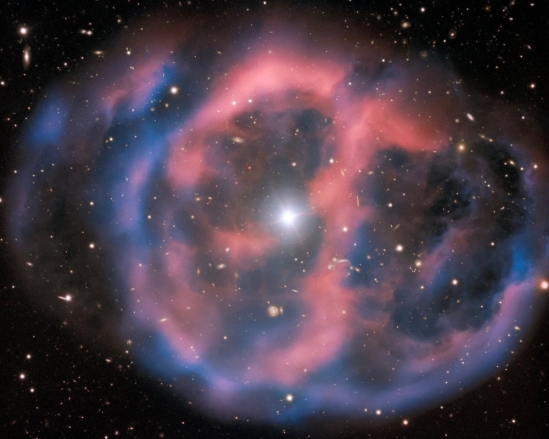New Stars on the Cosmic Block Are Fast, Bright and Pulsating
It's a whole new class of stars!

Astronomers have stumbled upon a new class of pulsating stars, which change brightness every 6 to 8 minutes with a range of around 10% — much faster and more varied than any other variable stars observed before.
Many stars pulsate, slightly fluctuating their brightness as their outer layers expand and contract. But the scientists were struck by the rate and range of changing brightness observed in four hot subdwarf pulsating stars. Subdwarfs are stars with lower luminosity and mass.
"It was really hard to distinguish them from any other thing we have seen before," Thomas Kupfer, a postdoctoral scholar at the University of California, Santa Barbara, and lead author of the study, told Space.com. "The brightness change was very, very large, more than 10%, which has not been seen in similar types of stars." Stars usually change brightness by 1-2%, he added, including our own sun.
Related: How to Tell Star Types Apart (Infographic)
The four subdwarf stars are one-tenth the size of the sun and are very hot while simultaneously being compact. Their temperatures reach up to 90,000 degrees Fahrenheit (50,000 degrees Celsius), while the sun's surface temperature is around 10,000 F (5,538 C).
During its growth phase, a star will begin to "puff up" before becoming a red giant star, or a dying star in the last stages of its evolution. However, Kupfer explained, the newly discovered subdwarfs seem to have lost their envelope of hydrogen, which is why they are high in temperatures and yet small in size.
The scientists believe that the stars may have each been part of a binary system in which two stars orbit one another, and that their companion stars likely stripped them of their hydrogen.
Get the Space.com Newsletter
Breaking space news, the latest updates on rocket launches, skywatching events and more!
Due to their high temperatures, there is a lot of radiation pressure in those stars that pushes heavy elements such as iron up to their surface.
"There's an iron layer closer to the surface, even though we can't see it, which is driving this pulsation," Kupfer said.
As the radiation pushes the heavy elements up, temperatures inside the star rise, and then the iron cools down when it reaches the surface and temperatures go back down. This cycle of events causes a contraction and expansion of the stars that lead to the pulsation.
"We're trying to find more; this is just four of them," Kupfer said. "Four is a really nice discovery, but it doesn't tell us much about the whole population."
As they go on the hunt for more pulsating stars, the team of scientists is hoping that this newly discovered population can provide some insight into what happens to stars like our sun toward the end of their lives after they have been stripped of their material.
The study was published in the Astrophysical Journal Letters.
- 50-Year Mystery of Strange Pulsating Stars Solved
- Brown Dwarfs: The Coolest Stars or the Hottest Planets?
- Scientists Spot Two Dead Stars Locked in a Dizzying Dance
Follow Passant Rabie on Twitter @passantrabie. Follow us on Twitter @Spacedotcom and on Facebook.
Join our Space Forums to keep talking space on the latest missions, night sky and more! And if you have a news tip, correction or comment, let us know at: community@space.com.

Passant Rabie is an award-winning journalist from Cairo, Egypt. Rabie moved to New York to pursue a master's degree in science journalism at New York University. She developed a strong passion for all things space, and guiding readers through the mysteries of the local universe. Rabie covers ongoing missions to distant planets and beyond, and breaks down recent discoveries in the world of astrophysics and the latest in ongoing space news. Prior to moving to New York, she spent years writing for independent media outlets across the Middle East and aims to produce accurate coverage of science stories within a regional context.









